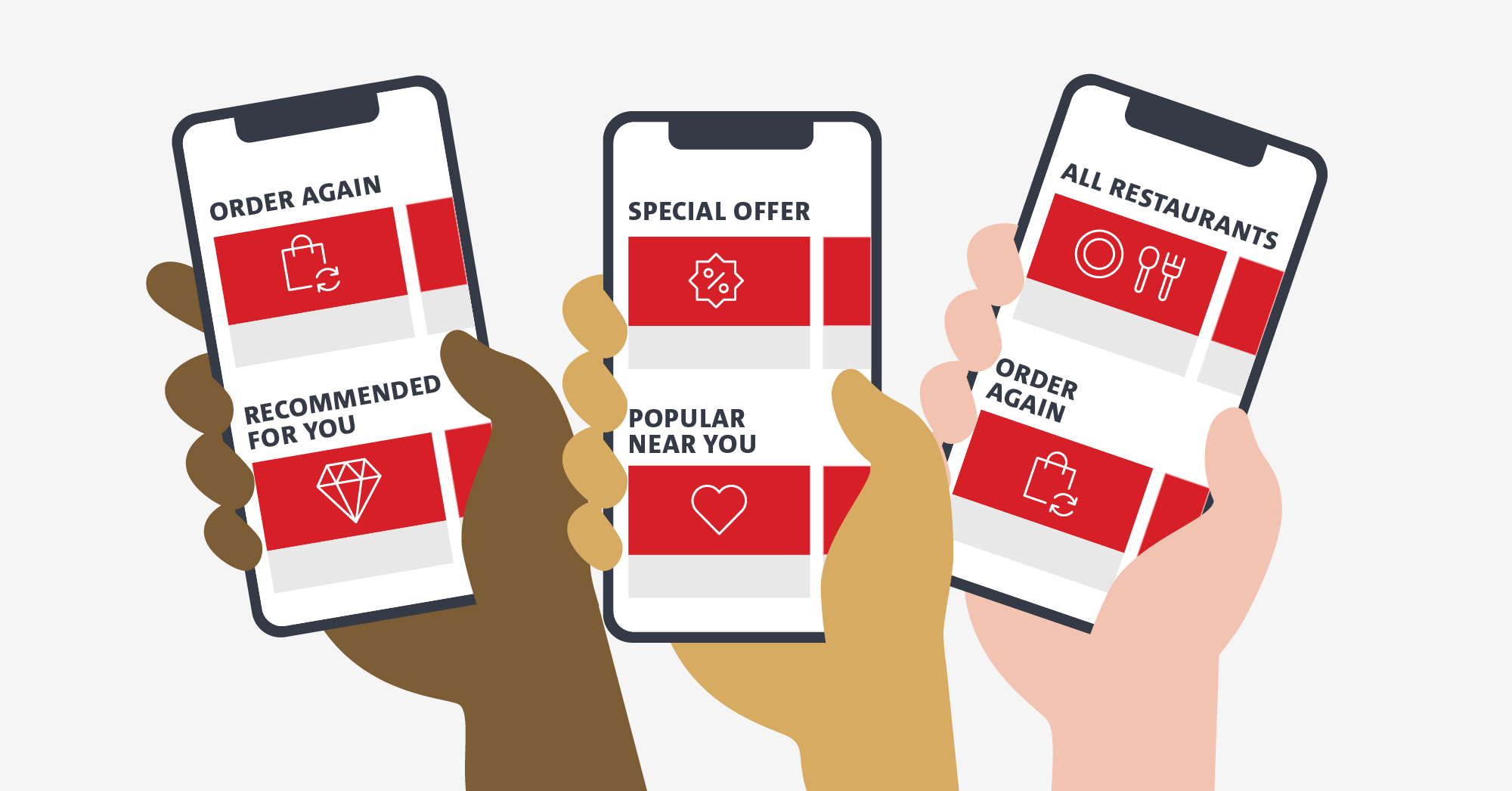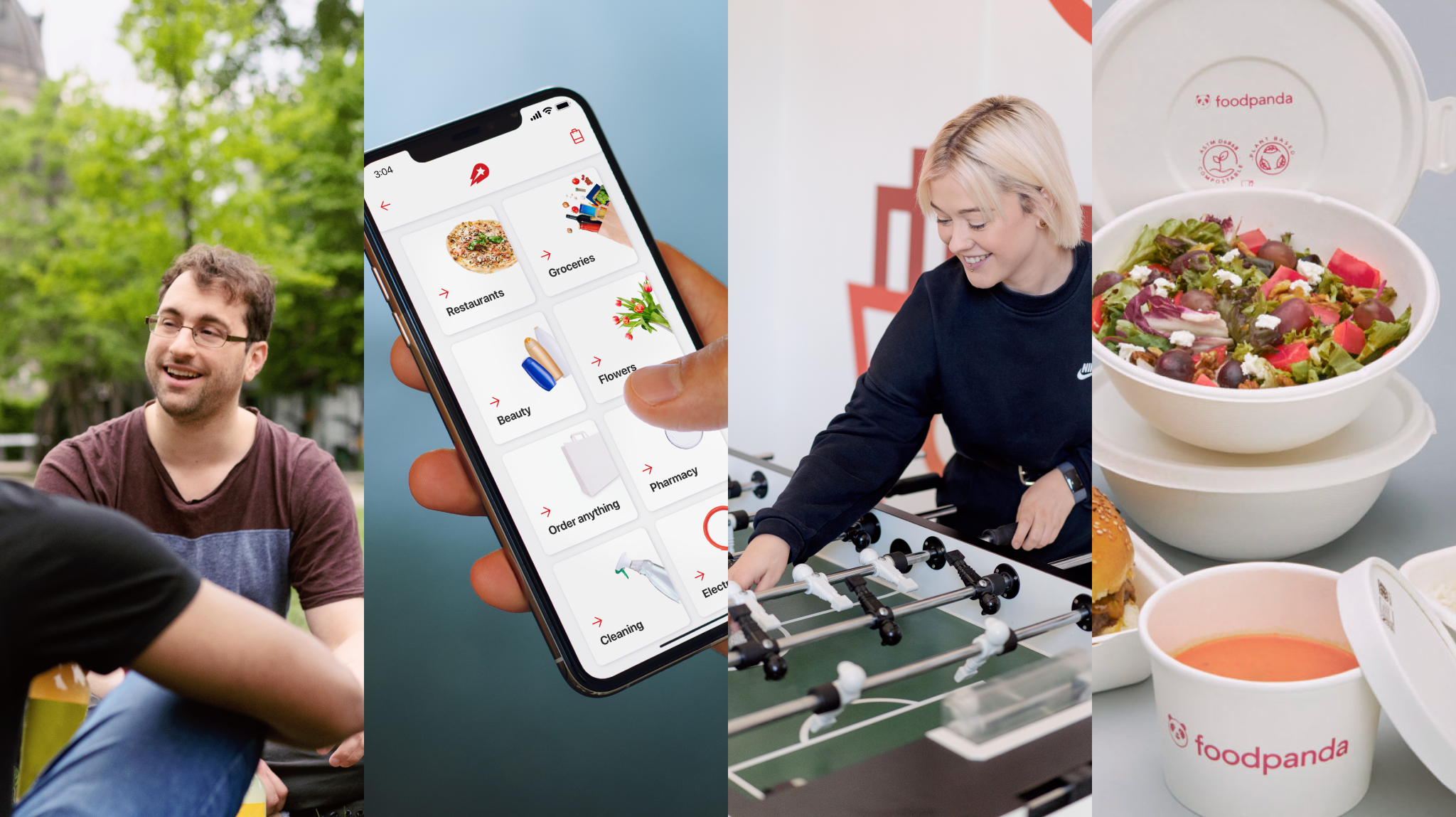Business & Innovation
- November 26, 2020Diving into local swimlanes: what personalization looks like in real life
Last week, we published a blog article on how we strive to personalize our users’ ordering experience through recommendations. Today, we dive head first into a very concrete customer-facing application of our personalization efforts, called swimlanes.
To better understand this concept and what it entails, we talked to Rose Marsh, Senior Manager at our brand talabat, which is the largest online food ordering company in the Middle East, operating in Kuwait, Saudi Arabia, Bahrain, the UAE, Oman, Qatar, Jordan, and Egypt. Let’s jump right in!

– Rose Marsh, Senior Manager at talabat
Rose, how would you describe swimlanes?
Swimlanes are a powerful discovery tool through which our users can find vendors to order from, or products to order. Our data shows that swimlanes are particularly powerful for users who haven’t decided what to order – for this reason, new users are heavy users of our swimlanes.
Whether it’s to discover products or vendors, the main advantage of swimlanes is that they offer curated collections to browse through. Instead of having to go through a very extensive list of items or vendors, swimlanes allow us to show our users a selection of the best and most relevant options for them to choose from.
There are several criteria we use for creating swimlanes, including:
- Order again: Restaurants the customer has previously ordered from,
- Recommended for you: Restaurants matching the customer’s taste profile,
- Special offers: Restaurants containing offers/deals in the customer’s area,
- Popular near you: Restaurants with the highest reorder rate score in the area,
- New on the platform: Restaurants that have been on the platform for less than 30 days.
In short, I see swimlanes as shortcuts through the discovery journey, and quick routes to the menu for our users.
When and how did you implement swimlanes in your apps at talabat?
We’ve had swimlanes at talabat for a while now, but they started playing a more prominent role in our discovery journey with the redesign of our Home Screen in 2020. We now have swimlanes live in all of our markets (Kuwait, Saudi Arabia, Bahrain, the UAE, Oman, Qatar, Jordan, and Egypt).

The significant click and conversion data we have gathered from this implementation now allows us to analyse which swimlanes work best, in which market, and when (time of day, day of week, etc.) Based on this information, we are now able to hyperlocalize and optimize the performance of our swimlanes and use them to their full potential.
I see swimlanes as shortcuts through the discovery journey, and quick routes to the menu for our users.
We have a “vanilla” swimlane setup that we use as the starting point for each local implementation. We then adjust this based on local insights and business goals: some markets are for example more affordability driven than others, and some have affinities with specific cuisines. We also review our swimlane performance data on an always-on basis to ensure that what is live works for our users and our business. The power of swimlanes is that they are dynamic and change with our users’ preferences and contexts, and with our evolving business offering.
Keeping in mind that we work very closely with our vendors, what’s in it for them?
Swimlanes are a great way to diversify our order share and reward vendors with increased exposure. The personalized and curated elements of swimlanes allow us to recommend vendors to our users based on their preferences, and to extend their vendor universe outside of the handful of restaurants they already know. In this way, we grow our vendors’ exposure and orders, and we also increase the value that we’re able to offer to our users (giving them more restaurants they like to order from).
The power of swimlanes is that they are dynamic and change with our users’ preferences and contexts
From experience, we have noticed that our customers usually have a rather restricted pool of vendors that they are willing to order from. For this reason, it’s important that we drive our users to new vendors who will offer them food or groceries that meet their tastes, and that will offer them a great ordering experience.
The most important element in making each swimlane successful is that their value is clear to our users. For each swimlane on our product, we must ask ourselves – why would the user click? What data or insight do we have to prove that users will be interested in this collection of vendors or products?

Have you seen an evolution of customer behaviour after implementing swimlanes within your apps?
Interestingly, we see new users adopting our swimlanes at a higher rate than returning users. A healthy proportion of our acquired customers come from swimlanes, and we believe that this is because new users tend to have a rather vague idea of what they want to order and are therefore more open to being recommended vendors and products.
Since new users are more likely to stop using our app after a bad order, it’s extremely important that the vendors we feature in our swimlanes offer our users a great ordering experience.
For each swimlane on our product, we must ask ourselves – why would the user click?
Generally speaking, the two groups who use swimlanes the most are:
- Users who come to the app not really knowing in advance what they want to order (for example new users), and;
- Users who are price sensitive and looking for a great deal
How does the implementation of swimlanes actually work? How did you as a local team collaborate with the central tech teams in Berlin?
The Central Team has developed a great tool called Disco Floor that allows us to manage our swimlanes locally. It utilizes our vendor data and all the elements that we know about them (such as rating, delivery time, etc.), and allows us to use this data to curate and sort our vendors accordingly. It would, for example, allow us to click a few buttons to activate a swimlane that contains all the restaurants that usually deliver in under 30 minutes.
What is great about being part of such a diverse, international group of companies and brands is that we are able to learn from each other. There have been swimlane features tested at foodpanda, for example, that we have also tested and adopted in our own product. It feels like being part of a group that is larger than its individual parts.





Share